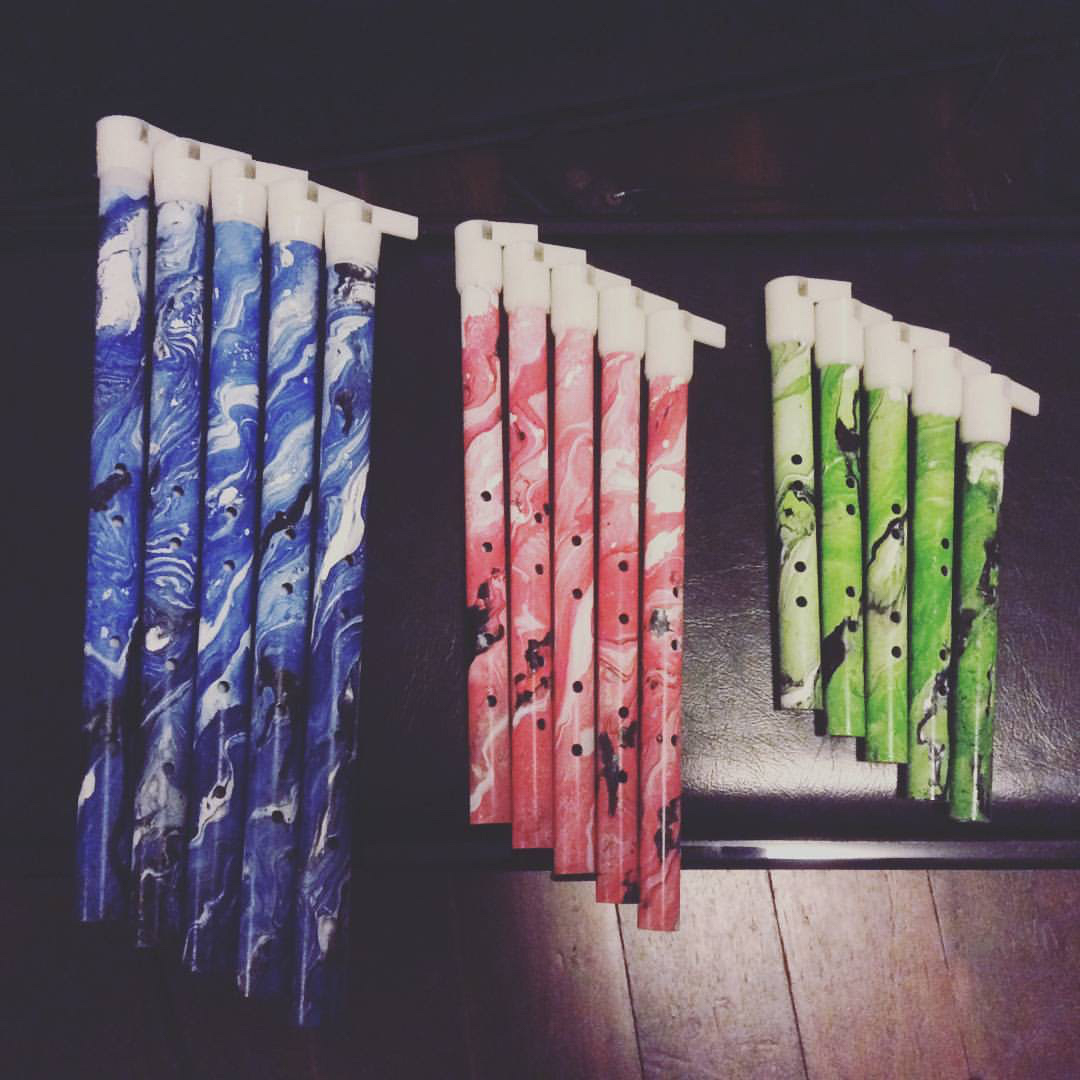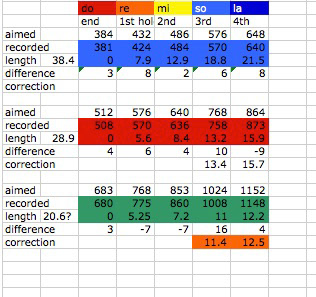




3D printed flutes are designed as a way for people of limited musical experience to easily be able to play together in a group. Each flute has four holes allowing players to focus on expression and group presence. Three flute sizes were chosen with the aim of exploring harmonic tuning. Each size was coloured to reflect the relationship to the harmonic tuning used in the Makestra. The central flute (red) had its fundamental tone pitched at 512 Hz. Ascending tones from the fundamental follow the same logic as the pentatonic scale.
The other two flutes (green and blue) used identical frequency ratios, but their fundamentals were pitched a perfect 4th (4/3) above and below the red flute, respectively. This makes the green fundamental 683.66 Hz and the blue fundamental 384 Hz.
The other two flutes (green and blue) used identical frequency ratios, but their fundamentals were pitched a perfect 4th (4/3) above and below the red flute, respectively. This makes the green fundamental 683.66 Hz and the blue fundamental 384 Hz.
The flutes are designed to work with 3D spectrogram scoring, where hole positions correspond to coloured bars on the score. For this reason, the flutes point to the left (the opposite direction to a standard flute). This means that lower pitched notes on the flute line up with the lower notes on the score. It makes playing along to 3D spectrograms somewhat like playing "Guitar Hero", with little mental rotation required.
The 3D printed flutes have been incorporated within in a number of installations, workshops and performances, including:
-Perth International Arts Festival (March 2017). Over two consecutive evenings a group of 40 people were taught to play the flutes in a group. Participant ages, background and musical ability varied greatly, and this was a successful demonstration of being able to quickly and efficiently facilitate a large group to play together and enjoy the experience.
-Perth International Arts Festival (March 2017). Over two consecutive evenings a group of 40 people were taught to play the flutes in a group. Participant ages, background and musical ability varied greatly, and this was a successful demonstration of being able to quickly and efficiently facilitate a large group to play together and enjoy the experience.
-ANZARME (Australia New Zealand Association for Research in Music Education) conference (September 2017). I gave a talk at this conference where attendees were taught to play the flutes.
-Making the Makestra (exhibition) Spectrum Project Space (February 2017). An installation was made as part of this exhibition, where attendees could independently try out the flutes, playing to a 3D spectrogram score. There were two performances during this exhibition, where audience members were encouraged to participate and play along on 3D printed flute.
-WAAPA research week (poster presentation), (October 2017). I made an installation as part of my honours thesis poster presentation. A 3D spectrogram score was created where attendees could try and play along to recorded birdsong.
-Comedy: Allegretto – a homage to Charles Ives (performance), (October 2016). Dreams Adorn for 16 tone Piano and 3D printed flute ensemble.
-NoizeMaschin!! (Performances), (Perth and Mandurah, 2016). Trial performances to test out the flutes in live environment and develop scoring and performance practice.